Nefertiti, the iconic female face of ancient Egypt, lived 3500 years ago during an upheaval of ancient life caused by her husband, Pharaoh Akhenaten. The identity of this woman has been cloaked in mystery since her discovery in the ruins of the city that she and her husband founded, Akhetaten, now called Amarna. Nefertiti is now believed to have been a powerful figure in her own right, more than a queen, more than a ruler; Nefertiti was a mother. We know of six children born between Akhenaten and Nefertiti. It was these children that caused much controversy between Akhenaten, Nefertiti, and a secondary wife, Kiya. Kiya gave birth to the famous pharaoh, Tutankhamun. On the other hand, Nefertiti had a string of female children, but why did they disappear, marries of their own, and what can we learn about their lives under the shadow of Amarna’s palace?
In 1912, German archaeologists were excavating at the desolate city of Amarna, where they discovered many intriguing objects from Nefertiti’s life: stylized yet lifelike images of the queen, paraphernalia, children, and other royal family members, most notably the bust of Nefertiti. Because the times were different in the early 1900s, many of these artifacts found at Amarna have been removed from Egypt and scattered far and wide across the world. I’ve come here to the Neues Museum in Berlin, where they have the biggest collection of Amarna art in the world, and I’m finally going to come face to face with the children of Nefertiti to find out who they really were. These are the daughters of Nefertiti and the sisters of Tutankhamun.
Around 1352 BC, Amenhoteb III was ruling Egypt, though at quite an advanced age. He probably had a co-regent, a formidable woman who had assisted Amenhoteb III for many decades. In fact, many foreign correspondences preferred to converse with this queen rather than the pharaoh. It was in one of these foreign letters from the Hittites that he congratulated the queen on the birth of her granddaughter, Meritaten. This grandmother and queen were none other than Queen Ti, Amenhoteb’s and Ti’s father, and Ti had several children, including a young prince, the future Pharaoh Akhenaten.
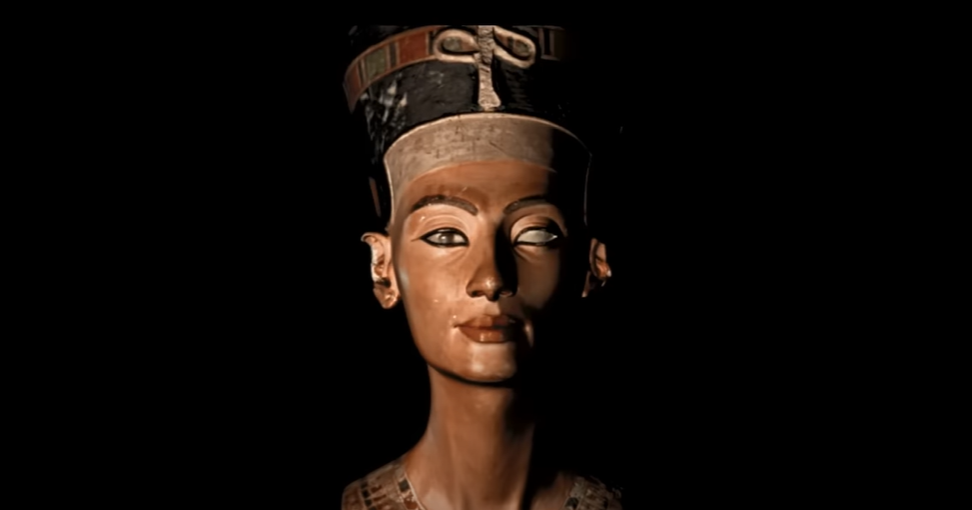
They lived in Thebes on the west bank in an opulent palace called Malkata. The son of Ti and Amenhotep III was named Amenhotep IV; however, shortly after his father’s death, he changed his name from Amenhotep IV to Akhenaten. Amenhotep IV had married a young girl from a noble family, Nefertiti. Ancient textual evidence possibly names her father as a courtier of Amenhotep III and the brother of Queen Ti. His name was Ay. Toward the end of Amenhotep III’s life, Akhenaten and Nefertiti had their first child together. They named her Meritaten, which means “the one who makes the sun god Aten happy.” By naming their daughter this, it was a foreshadowing of what religious changes were about to occur. Meritaten would have known her grandfather Amenhotep III before he died, as she is shown at Karnak temple with Nefertiti.
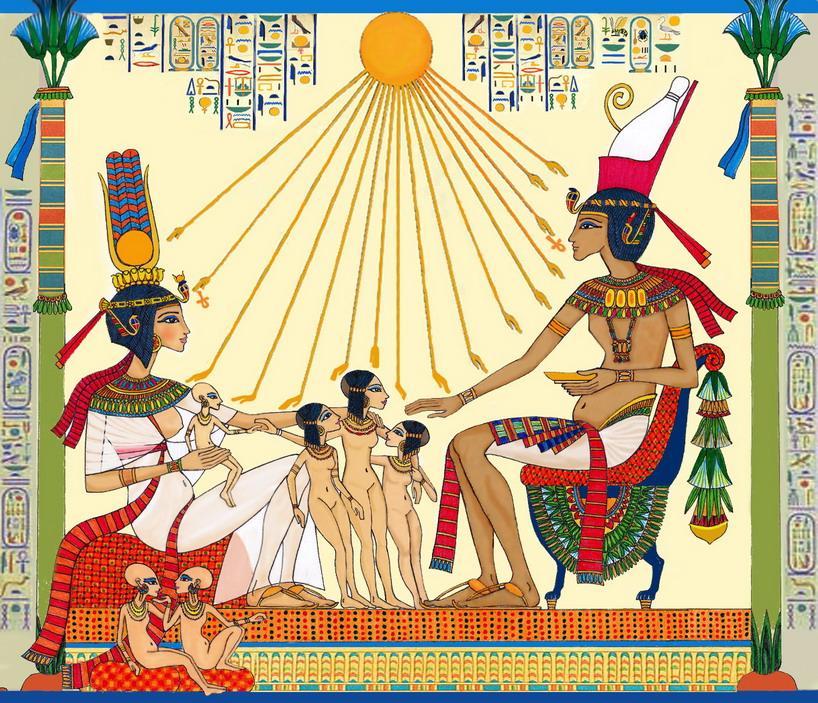
Meritaten’s father, Amenhotep IV, became Pharaoh when his grandfather died. They only continued to live in Thebes for the next four years. Her father began to show less interest in the plethora of Egyptian gods, in particular, Amun, to whom Karnak temple was home. Her father began to favor a new capital, miles north of Thebes, and named it Akhetaten, meaning “the horizon of the Aten.” He even went as far as to remove his previous name, which mentioned the god Amun, and changed it to Akhenaten, meaning “the servant of Aten.” It would be in this new city that Meritaten was given her highest-ranking positions. According to many, a northern palace at Akhetaten was built for a secondary wife of Akhenaten, whose name was later replaced with the name of Meritaten. Meritaten is depicted many times in the new city, where she is venerating the god Aten, along with her father Akhenaten and mother Nefertiti. A very close relationship is visible between Meritaten and Akhenaten during her younger years. On one scene, Akhenaten is shown giving a golden earring to Meritaten. It is known that Akhenaten and Nefertiti had six daughters together and only daughters. The secondary wife of Akhenaten, Kiya, gave birth to the male heir Tutankhaten, later called Tutankhamun.
This would have caused some friction between Nefertiti and Kiya. Various scenes after the birth of Tut show Kiya disappearing. Did she die or was she removed by Nefertiti? Some believe that Meritaten, the half-sister of Tut, became his adoptive mother and raised him in the northern palace, which was formally inhabited by Kiya. Although the west bank of Tut was named Maya, some believe that Maya and Meritaten are one and the same, but this theory holds little factual evidence.
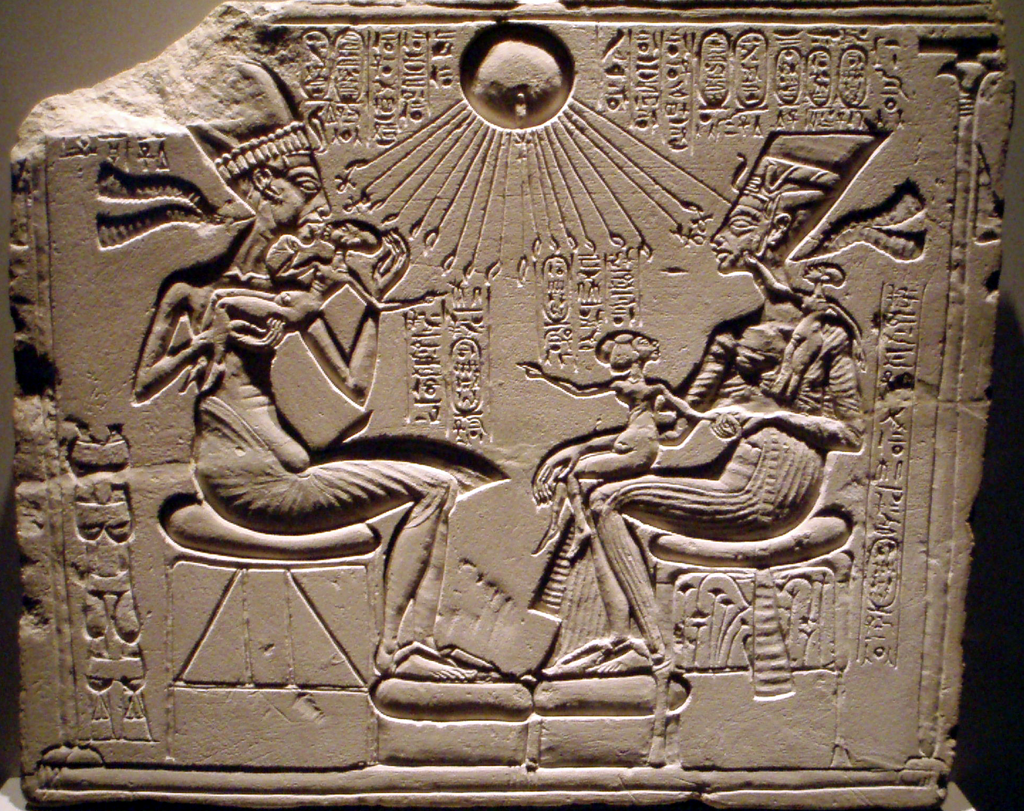
Even though many artifacts belonging to Meritaten were found in the tomb of Tutankhamun, from a clothing chest to musical cappers containing the names of Meritaten and their grandmother Queen Ti, life in Akhenaten’s new city was not the utopia that he had dreamed of. Palaces swept throughout the town, foreign allies turned their backs, and the population were not as welcoming of the idea of only one god Aten as he had hoped. Perhaps swept through by paranoia, before things began to fall apart, he had become a co-regent with Akhenaten, but she appears to have disappeared when Akhenaten died. Perhaps she changed her name to the royal name of Nefertiti. Out of the blue, a new co-regent arrives on the scene around this time, named Smenkhkare. Some even go as far as to suggest a bisexual relationship between Akhenaten and Smenkhkare. Smenkhkare became a short-lived pharaoh when Akhenaten died. High in the heels of Akhenaten, at the nobles’ tombs, in one tomb of Merira, Smenkhkare is shown giving tribute to Meritaten. In this tomb, we have a clear sign that Meritaten became the great royal wife of Smenkhkare. It is even possible that before things began to fall apart, there were four rulers of Egypt at the same time: Akhenaten, Nefertiti, Smenkhkare, and Meritaten. It is possible that she had given birth to two children, one sharing the same name as her mother, Meritaten.
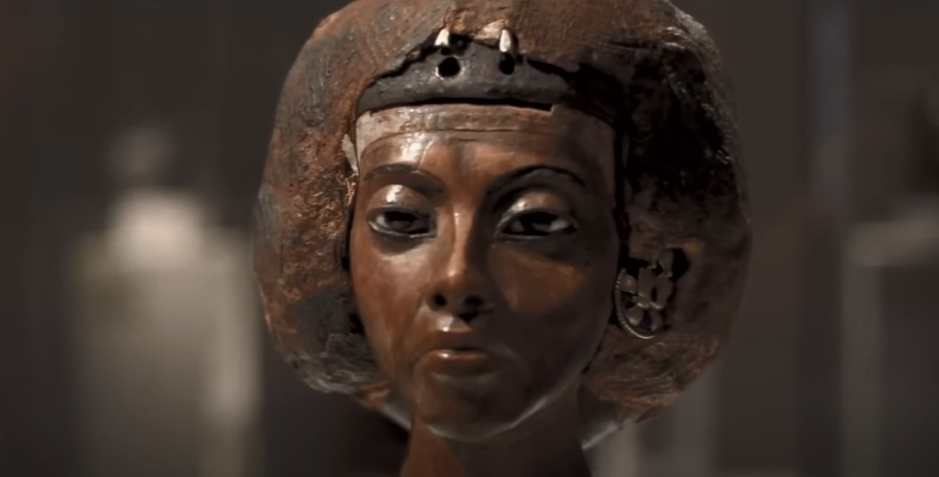
A tomb for Meritaten has never been found. A boundary stela of her father mentions that she shall be laid to rest in the family tomb in the Eastern Mountains, but no sign of Meritaten being buried there was ever found. We have no idea what the final fate of Meritaten was. A new female ruler appears, and the two former rulers, Smenkhkare and Meritaten, disappear. Did they give up the throne and move back to Thebes with the rise of Amarna and a new young pharaoh who became Tutankhamun? Did they go up the Nile and live in shame? One may never know.
The second daughter of Nefertiti is named Meritaten, meaning “protected by Aten.” Unsurprisingly, very little is known about Meritaten. She first appears in Thebes at Karnak, in a temple built by her father Akhenaten, just three years before the family moved to the new capital city. She is then mentioned in year four of Akhenaten on a boundary stela of Amarna. There, we can deduce that she was around seven years old at this time. This royal family is extremely close, and scenes show them in loving moments. Meritaten appears on the lap of Nefertiti in one scene, holding hands with her mother, while two of her other sisters also join in. Wherever Meritaten is, she seems close with Nefertiti, her eldest sister, and Meritaten appears closer with Akhenaten on the same scene. In the tomb of her grandfather, she is shown helping a tray of offerings to be carried.
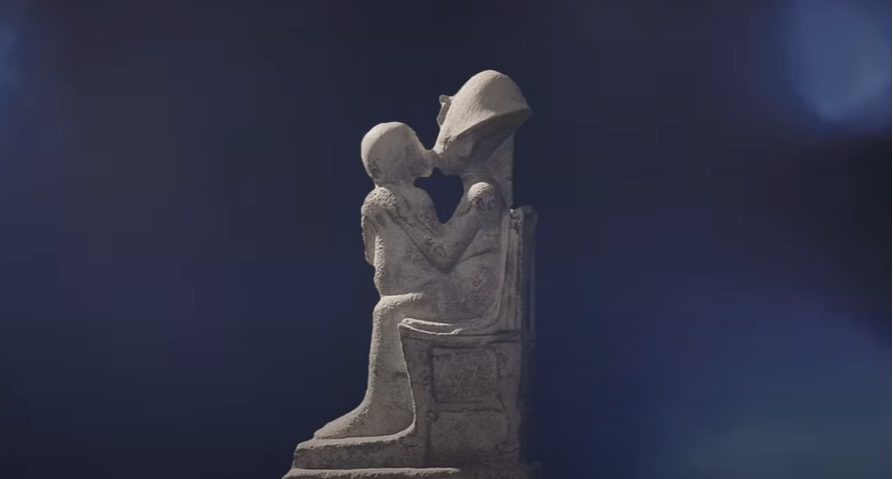
When she was around 15 years old, she appears again in several Amarna tombs, including the tomb of Huya and Meryre. It is suggested that she married her father, Akhenaten, and became pregnant, but things seemed to end between her and her father for Meritaten. She died in the year 14 of Akhenaten’s reign, which means she was around 17 years old. She was buried in a royal tomb at Amarna. Unlike the old view on death and rebirth in the next life, where you needed to appease several gods, Akhenaten believed you simply ascend in heaven and rise like the Aten sun from your devotion in this life. In the tomb of Meritaten, the sad reality of her death comes to light. Her entire family is shown grieving for her in an extremely sad moment. She is shown deceased under a canopy, and the significance of her under the canopy is heartbreaking: the canopy at this time symbolized childbirth. Many believe that this is the child that Meritaten gave birth to. Various objects from Meritaten’s remains, yet only one scribal palette can be marvelled at, showing the name of Nefertiti and her daughter, Meritaten.
The third daughter, Ankhesenpaaten, is either the possible twin sister of Meritaten or may have been born soon after Meritaten. The thought behind them being twins is that they are both shown at what looks to be the same age on a palace fresco. Both princesses are shown bold, with their distinctive eye liner, as well as being adorned in fine blue lapis lazuli and gold jewelry. Ankhesenpaaten is said to have been born in the year 11 of Akhenaten’s rule. She does not appear in many scenes with the family, apart from one where she is shown as a young toddler sitting on a pillow, playing with her younger baby sister. The entire extended Amarna family is shown in this fresco from the main palace; however, the only surviving intact scene is that of Ankhesenpaaten and Tasherit. Since the others’ feet are still visible in the fresco, artists have been able to reconstruct the scene to allow us to imagine how it initially looked.
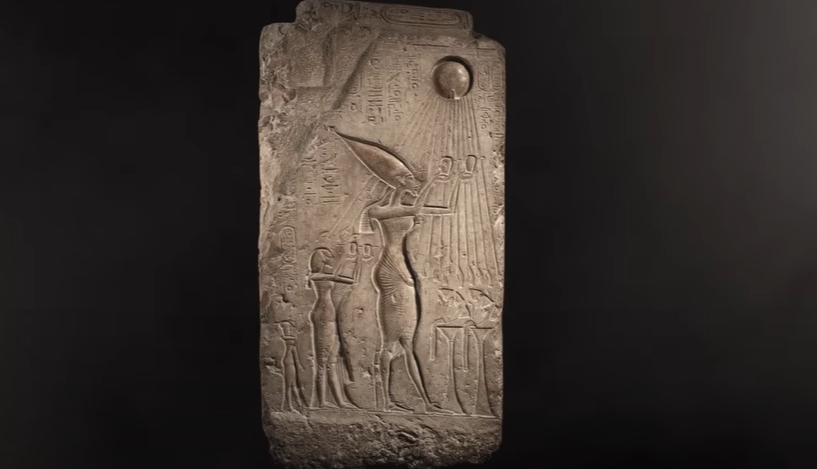
Ankhesenpaaten does, however, make two brief appearances as a young princess in a noble’s tomb at Amarna, where she is shown with her other sisters. She does not appear to have a high role in the family when it comes to official duties, which is why she could possibly have only been shown in noble’s tombs. Ankhesenpaaten was present at the death of her oldest sister, Meritaten, as she is included in the group of princesses mourning their sister’s passing. This scene took place before the next two younger sisters were born, as they are not present in the scene. Many are uncertain of the ultimate fate of this princess. She may have been the Amarna princess shown in several scenes without titles, as many believe she died before Tutankhamun and Ankhesenamun took the throne.
The fourth daughter is referred to as her mother, Nefertiti. She is known as Neferneferuaten Tasherit or “the beauty of the Aten.” The young girl is thought to have been born around year 9 of Akhenaten’s reign. She does not appear in many scenes with the family apart from one, where she is shown as a young toddler, sitting on a pillow, playing with her younger baby sister. The entire Amarna family scene is shown in this frame, including Neferneferuaten Tasherit. Since the other scenes’ features are still visible in the frame, artists have been able to use this as a base to reconstruct the scene to allow us to imagine how it initially looked.
Nefertiti Tasherit, however, makes two brief appearances as a young princess in a noble’s tomb at Amarna, where she is shown with her other sisters. She does not appear to have a high role in the family when it comes to official duties, which is why she could possibly have only been shown in noble’s tombs. Nefertiti Tasherit was present at the death of her oldest sister, Meritaten, as she is included in the lineup of princesses mourning their sister’s passing. This scene took place before the next two younger sisters were born, as they are not present in the scene. Many are uncertain of the ultimate fate of this princess. She may have been present in several scenes with titles, as many believe she died before Tutankhamun and Ankesenamun took the throne.
The name of Nefertiti’s fifth daughter is translated as Setepenre, meaning “Chosen of Re.” Her name deviates slightly from the traditional Amarna period style but still maintains a reference to the solar deity Re. She could possibly have been a precursor to the dramatic religious shift back to the worship of Amun during the reign of Tutankhamun.
Setepenre, the last-born daughter of Akhenaten and Nefertiti, was born around year 11 of Akhenaten’s rule. Before the birth of her younger sister, she was depicted at the age of six, just before the death of Meritaten, in various family scenes. There are statues, inlays, and ostraka showing the princesses of the Amarna family, including many where Setepenre appears with her older sisters.
The representations of Setepenre were intended to be a commemoration of the family moments before the death of Meritaten. Whether these depictions portray a short-lived Pharaoh Setepenre or are merely artistic interpretations is unknown, as many of these precious pieces were damaged when the city was abandoned and were reassembled during subsequent excavations.
In conclusion, Nefertiti and Akhenaten had six daughters together: Meritaten, Meketaten, Ankhesenpaaten, Neferneferuaten Tasherit, Setepenre, and Ankhesenamun. Some of their fates remain uncertain, and much of their lives are shrouded in mystery. However, the surviving artifacts and representations provide glimpses into the lives of these princesses, their family dynamics, and their roles in the religious and political changes of the time.




